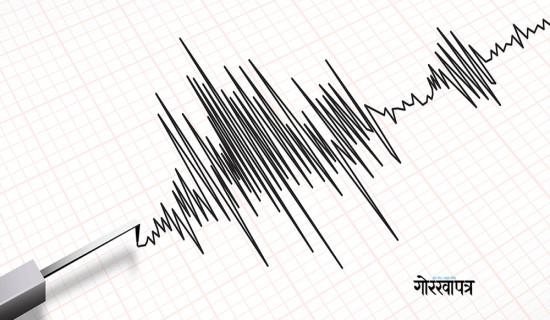- Sunday, 22 December 2024
Reducing Catastrophic Health Expenditure
Catastrophic health expenditure (CHE) is a global challenge, disproportionately affecting low- and middle-income countries. This term refers to situations where individuals or households must spend a large portion of their income on healthcare, often pushing them into poverty or deepening existing financial hardships. The World Health Organisation (WHO) defines catastrophic health spending as out-of-pocket payments that exceed a specific threshold of household income, typically 10 per cent or 25 per cent.
Catastrophic health expenditure (CHE) is one of Nepal’s most pressing yet under-addressed public health challenges. For a country striving to improve its healthcare system and ensure universal health coverage (UHC), the reality is that many Nepali families have plunged into financial devastation by medical expenses. Despite numerous policy initiatives and reforms, the burden of out-of-pocket payments (OOPs) remains overwhelming for millions, leading to economic hardship and deepening poverty.
Nepal, like many low- and middle-income countries, faces systemic challenges in providing affordable healthcare to its population. These challenges are exacerbated by a lack of robust health financing mechanisms, inadequate insurance coverage, and the high costs of medicines and hospital care. As a result, the country is witnessing a growing wave of CHE, particularly among its most vulnerable populations.
Problem
CHE has profound consequences on households, especially the poor. For low-income families, even a single medical emergency can wipe out years of savings. Families may delay or forgo seeking medical treatment to avoid financial ruin, leading to worse health outcomes. Moreover, healthcare debts can lead to the sale of essential assets like homes, land, or livestock, further entrenching families in cycles of poverty.
In Nepal, the majority of healthcare costs are paid directly by individuals and families at the point of care, with OOPs accounting for over 50 per cent of total health expenditure. For many households, these costs can be catastrophic, leading them to sell property, take out high-interest loans, or deplete savings. According to the World Bank, around 11 per cent of Nepali households incur catastrophic health expenditure annually, pushing them into deeper poverty.
The issue is particularly severe in rural areas, where access to healthcare is limited and people often have to travel long distances to reach hospitals. Even in urban centers like Kathmandu, the costs of private healthcare can be exorbitant, especially for severe illnesses or chronic conditions like heart disease, cancer, and diabetes. Additionally, the informal nature of Nepal’s economy means that many citizens lack access to social security or health insurance, further increasing their vulnerability to CHE.
The persistence of OOPs stems from inadequate public health funding, insurance schemes, and fragmented healthcare systems. Many governments fail to allocate sufficient resources to public health, leaving citizens to shoulder the burden. In countries where health insurance exists, coverage gaps and inadequate benefits leave individuals vulnerable to high expenses for medicines, diagnostics, and specialised care.
The key to reducing CHE lies in a robust, equitable healthcare system that prioritises access for all. This requires multiple policy interventions. Governments need to prioritise healthcare in their budgets. Increasing public health spending ensures better infrastructure, broader access, and fewer instances of patients paying out-of-pocket. Health insurance systems should cover a wider range of services, including outpatient care and medicines, which are often overlooked. Expanding coverage to informal workers and vulnerable populations is essential to prevent CHE. Targeted interventions, such as subsidised healthcare for low-income families, can help mitigate the financial burden. Programmes like these already exist in some countries but need better implementation and scaling.
A strong primary healthcare system is the first line of defense against catastrophic expenditure. Preventive care, early diagnosis, and affordable treatment at the community level can help avoid costly hospitalisations. Global health initiatives and international donors can play a significant role in supporting healthcare systems in low-income countries. By funding programmes that reduce OOPs, they can help alleviate the pressure on individuals and families.
While the Nepali government has made commendable efforts to improve healthcare access, much remains to be done. Health insurance coverage should be expanded to include poor and marginalised people. The existing insurance programme must be strengthened to include more people, particularly those in rural and marginalised communities. Ensuring that the insurance system covers a wider range of services, including diagnostics, outpatient care, and medicines, is crucial to reducing OOP payments.
Healthcare infrastructure
The government should also prioritise improving public healthcare infrastructure. Investing in well-equipped hospitals and healthcare centres, particularly in rural areas, would reduce the need for expensive referrals to private hospitals. Additionally, reforms are needed to regulate the private healthcare sector, ensuring that prices for services and medicines are standardised and kept within affordable limits. Lastly, there is a critical need for greater public awareness about health financing schemes and preventive healthcare. Many people are unaware of the insurance programmes and subsidies that do exist. Education campaigns on the importance of early diagnosis and regular health check-ups can also help prevent minor health issues from escalating into catastrophic conditions that are costly to treat.
The issue of catastrophic health expenditure in Nepal is a stark reminder of the urgent need for healthcare reform. While the government’s commitment to UHC is encouraging, without significant improvements to health financing mechanisms, public healthcare infrastructure, and insurance coverage, millions of Nepali families will continue to face financial ruin due to medical costs. Addressing these challenges is not just a matter of policy, but of social justice, ensuring that every Nepali, regardless of their economic status, has access to affordable and quality healthcare.
(Dr. Lohani is the executive director at the Health Concern. lohanis@gmail.com)

















